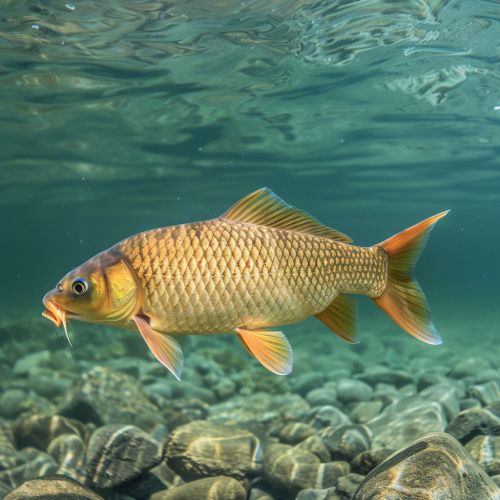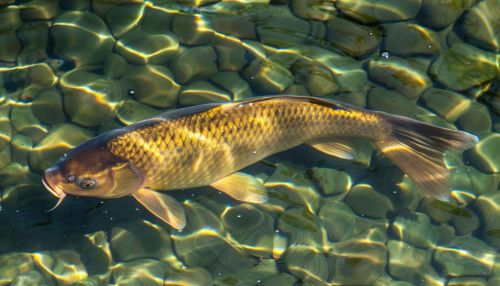Common Carp
Taxonomy and Naming
The Common Carp (Cyprinus carpio) is a widespread freshwater fish of eutrophic waters in lakes and large rivers in Europe and Asia. The wild populations are considered vulnerable to extinction by the IUCN, but the species has also been domesticated and introduced into environments worldwide, and is often considered a destructive invasive species.
Description


The Common Carp is a heavy-bodied minnow with barbels on either side of the upper jaw. Typical color varies from brassy green or yellow, with the back darker than the sides, and a whitish belly. However, color varies greatly with environment. In clear water that has much aquatic vegetation, carp are typically a dark brown. In turbid environments, they are typically a light golden color.
Distribution and Habitat
The Common Carp is native to Europe and Asia, and has been introduced to every part of the world except the poles. They are the third most frequently introduced species worldwide, and their history as a farmed fish dates back to Roman times. Carp are used as food in many areas, but are also regarded as a pest in several regions due to their ability to outcompete native fish stocks.
Biology and Ecology
The Common Carp is a highly adaptable species. It thrives in areas where few other fish species can survive. It is a typical benthopelagic fish, inhabiting the bottom layers of water bodies, and it prefers large bodies of slow or standing water and soft, vegetative sediments. It can tolerate water with low oxygen levels, and temperatures from 3 to 35 °C.
Human Interaction
Common Carp have been farmed for their meat for over 2000 years, but have also been kept for decorative purposes in ponds. In the wild, they are a prized catch for anglers, due to their size and the challenge they pose. However, they can also be problematic in the ecosystems they inhabit due to their tendency to uproot vegetation and muddy water.
